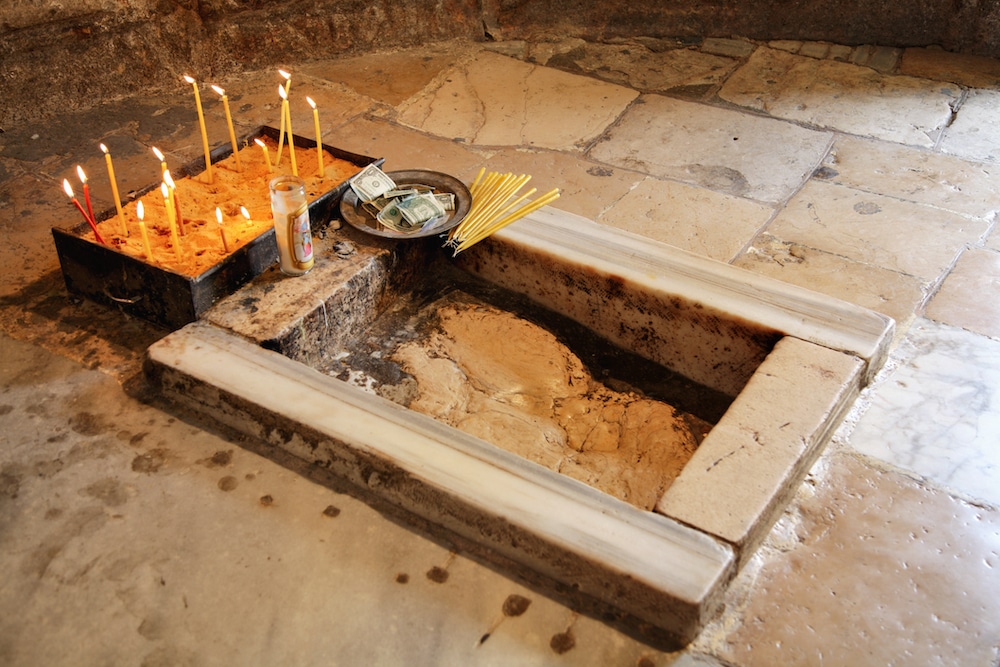One of the most well-known Christian poems in America has a history that is almost as complicated as the poem is beloved. The poem “Footprints” tells the story of a soul feeling abandoned by God. Having once walked side by side with Jesus, in the poem, the protagonist laments the times of difficulty in life where there was only one set of footprints left in the sand. The narrator bemoans the fact that he was forced to walk alone in those trying moments.
But as everyone who has heard the poem knows, the big reveal comes when the narrator learns that he has not been walking alone in those difficult moments after all. Jesus tells the soul, “During your times of trial and suffering, when you see only one set of footprints, it was then that I carried you.”
I say the poem’s history is complicated because its authorship is disputed. In fact, many authors have laid claim to it. And different variations of similar themes printed in a variety of newspapers and magazines suggest the image was a popular theme that inspired poets and preachers alike.
In 1979, it appeared in The Liguorian, the Redemptorists’ monthly publication. Paul Harvey has quoted it on his radio show, and advice columnists “Dear Abby” and Erma Brombeck have referenced the poem. Even President Ronald Reagan used the poem during his 1981 address at the National Prayer Breakfast.
But those footprints of Jesus in the sand are not the most ancient footprints revered in the Catholic tradition. As I’ve said, the poem seems to have come about in the 20th century, inspired by various sermons and anecdotes.
So what are the footprints that I want to share about? None other than the footprints of Christ left on the Mount of Olives at the Ascension.
That’s right, you read that correctly. An ancient and venerable tradition holds that when Christ ascended into heaven, his last earthly steps were captured in stone. As early as the fourth century, Christians designated particular places of prayer on the holy mountain, honoring this last event of Christ’s earthly life.
In a way, the footprints point to something most remarkable. On the feast of the Ascension, we hear proclaimed in Scripture the words of an angel who asked the disciples, “Men of Galilee, why are you standing there looking at the sky” (Acts 1:11). What is the last thing that disciples would have seen as Jesus ascended into heaven? His feet!
The feet of Christ were the feet of the life of the Gospel. The Lord walked from town to town with those feet bearing the Good News of salvation. As the prophet Isaiah says, “How beautiful upon the mountains are the feet of the one bringing good news” (Is 52:7).
Those were the feet that Mary washed with her tears and dried with her hair in the house at Bethany. She anointed the savior’s feet with precious oil, prefiguring his death.
Christ washed the feet of his disciples in a gesture of humble service and commission. He prepared them to be bearers of the Gospel in this solemn and sacred moment. And when he was crucified, the Lord’s feet were pierced with nails during the barbarous act of his crucifixion.
But the disciples saw the resurrected feet last on that fateful day. They gazed at the transformed nail marks, a final confirmation that, indeed, Christ had vanquished sin and death and opened to us the way to heaven.
So those last footprints are precious, indeed. They are a final commemoration — not of the walk of our own lives but of the path Christ trod for our redemption.







